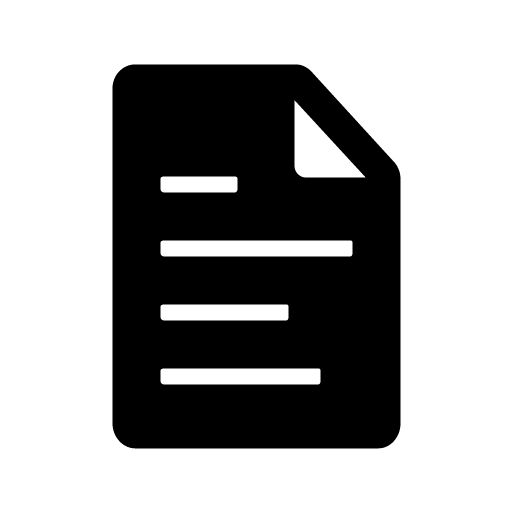Knowledge hiding: a bibliometric analysis research trends between 1982-2023
Abstract
Full Text:
PDFReferences
Anand, A., Centobelli, P. and Cerchione, R. (2020) ‘Why should I share knowledge with others? A review-based framework on events leading to knowledge hiding’, Journal of Organizational Change Management, ahead-of-print(ahead-of-print). Available at: https://doi.org/10.1108/JOCM-06-2019-0174.
Andrés, A. (2009) Measuring academic research: How to undertake a bibliometric study. Elsevier.
Aria, M. and Cuccurullo, C. (2017) ‘bibliometrix : An R-tool for comprehensive science mapping analysis’, Journal of Informetrics, 11(4), pp. 959–975. Available at: https://doi.org/10.1016/j.joi.2017.08.007.
Ball, R. (2018) ‘Bibliometric Methods: Basic Principles and Indicators’, in An Introduction to Bibliometrics. Elsevier, pp. 15–56. Available at: https://doi.org/10.1016/B978-0-08-102150-7.00003-7.
Burmeister, A., Fasbender, U. and Gerpott, F.H. (2019) ‘Consequences of knowledge hiding: The differential compensatory effects of guilt and shame’, Journal of Occupational and Organizational Psychology, 92(2), pp. 281–304. Available at: https://doi.org/10.1111/joop.12249.
Butt, A.S. (2020) ‘Mitigating knowledge hiding in a buyer-supplier relationship: An exploratory study’, Knowledge and Process Management, 27(3), pp. 187–196. Available at: https://doi.org/10.1002/kpm.1626.
Butt, A.S. (2021) ‘Determinants of top-down knowledge hiding in firms: an individual-level perspective’, Asian Business and Management, 20(2), pp. 259–279. Available at: https://doi.org/10.1057/s41291-019-00091-1.
Caputo, F. et al. (2019) ‘A knowledge-based view of people and technology: directions for a value co-creation-based learning organisation’, Journal of Knowledge Management, 23(7), pp. 1314–1334. Available at: https://doi.org/10.1108/JKM-10-2018-0645.
Castillo-Vergara, M., Alvarez-Marin, A. and Placencio-Hidalgo, D. (2018) ‘A bibliometric analysis of creativity in the field of business economics’, Journal of Business Research, 85, pp. 1–9. Available at: https://doi.org/10.1016/J.JBUSRES.2017.12.011.
Chiaburu, D.S. et al. (2013) ‘Antecedents and consequences of employee organizational cynicism: A meta-analysis’, Journal of Vocational Behavior, 83(2), pp. 181–197. Available at: https://doi.org/10.1016/J.JVB.2013.03.007.
Connelly, C.E. et al. (2012) ‘Knowledge hiding in organizations’, Journal of Organizational Behavior, 33(1), pp. 64–88. Available at: https://doi.org/10.1002/job.737.
Connelly, C.E. et al. (2019) ‘Understanding knowledge hiding in organizations’, Journal of Organizational Behavior, 40(7), pp. 779–782. Available at: https://doi.org/10.1002/job.2407.
Crane, D. (1972) Invisible colleges: Diffusion of knowledge in scientific communities . Chicago: University of Chicago Press.
El-Kassar, A.N. et al. (2022) ‘Antecedents and consequences of knowledge hiding: The roles of HR practices, organizational support for creativity, creativity, innovative work behavior, and task performance’, Journal of Business Research, 140, pp. 1–10. Available at: https://doi.org/10.1016/J.JBUSRES.2021.11.079.
Faidal, F. 2020. The Study of Workplaceand Work Experiences on Employee Performance. International Journal of Advanced Science and Technology Vol. 29, No.4, pp. 10430 – 10440
Hidayat, C. W., Sulistyo, Wilujeng, S., Chrismardani, Y., & Wahab. (2022). Human resource competencies, supply chain management, and financial performance. Uncertain Supply Chain Management, 10(2), 471–476. https://doi.org/10.5267/j.uscm.2021.12.004
Jannah, M. (2021). ZMOT marketing strategy during the Covid-19 pandemic. In Contemporary Research on Business and Management (pp. 166-169). CRC Press.
Lanke, P. (2018) ‘Knowledge hiding: impact of interpersonal behavior and expertise’, Human Resource Management International Digest, 26(2), pp. 30–32. Available at: https://doi.org/10.1108/HRMID-01-2018-0010.
Ma, H. et al. (2022) ‘Modeling entrepreneurial team faultlines: Collectivism, knowledge hiding, and team stability’, Journal of Business Research, 141, pp. 726–736. Available at: https://doi.org/10.1016/j.jbusres.2021.11.080.
Nguyen, T.M., Malik, A. and Budhwar, P. (2022) ‘Knowledge hiding in organizational crisis: The moderating role of leadership’, Journal of Business Research, 139. Available at: https://doi.org/10.1016/j.jbusres.2021.09.026.
Peng, H. (2012) ‘Counterproductive Work Behavior Among Chinese Knowledge Workers’, International Journal of Selection and Assessment, 20(2). Available at: https://doi.org/10.1111/j.1468-2389.2012.00586.x.
Rasyid, M., Kristina, A., Wantara, P., Jumali, M.A. (2023). Household Participations and Sustainable Development Programs: Social Impact of Government Assistance in Indonesia. International Journal of Sustainable Development and Planning. Vol. 18, No. 6, June, 2023, pp. 1725-1732
Rousseau, R., Egghe, L. and Guns, R. (2018) Becoming metric-wise: A bibliometric guide for researchers. Chandos Publishing.
Safrizal, H. B. A., Eliyana, A., Usman, I., & Gunarsa, F. A. (2020). The effect of transformational leadership on job satisfaction: The mediation effect of self-efficacy and work engagement. Systematic Reviews in Pharmacy, 11(8).
Safrizal, H. B. A. (2023). Innovative Behavior as an Antecedent of Employee Performance. resmilitaris, 13(3), 904-915.
Serenko, A. and Bontis, N. (2016) ‘Understanding counterproductive knowledge behavior: antecedents and consequences of intra-organizational knowledge hiding’, Journal of Knowledge Management, 20(6), pp. 1199–1224. Available at: https://doi.org/10.1108/JKM-05-2016-0203.
Singh, S.K. (2019) ‘Territoriality, task performance, and workplace deviance: Empirical evidence on role of knowledge hiding’, Journal of Business Research, 97, pp. 10–19. Available at: https://doi.org/10.1016/J.JBUSRES.2018.12.034.
Sulistiawan, J. et al. (2022) ‘Why and When Do Employees Hide Their Knowledge?’, Behavioral Sciences, 12(2), p. 56. Available at: https://doi.org/10.3390/bs12020056.
Tugce Guler, A. et al. (2016) ‘Scientific workflows for bibliometrics’, Scientometrics, 107, pp. 385–398. Available at: https://doi.org/10.1007/s11192-016-1885-6.
Di Vaio, A. et al. (2021) ‘Understanding knowledge hiding in business organizations: A bibliometric analysis of research trends, 1988–2020’, Journal of Business Research, 134, pp. 560–573. Available at: https://doi.org/10.1016/J.JBUSRES.2021.05.040.
Victoria, A. H., Manikanthan, S. V., Varadaraju, H. R., Wildan, M. A., & Kishore, K. H. (2022). Radar Based Activity Recognition using CNN-LSTM Network Architecture. International Journal of Communication Networks and Information Security, 14(3), 303-312.
Wildan, M. A., Imron, M. A., & Siswati, E. (2021). Macroeconomic factors affecting natural gas export management. International Journal of Energy Economics and Policy, 11(1), 639-644.
Xia, Qing et al. (2022) ‘A Bibliometric Analysis of Knowledge-Hiding Research’, Behavioral Sciences, 12(5). Available at: https://doi.org/10.3390/bs12050122.
Xia, Q et al. (2022) ‘Request politeness and knowledge hiding: a daily diary study through an affective events perspective’, European Journal of Work and Organizational Psychology, 31(4), pp. 496–509. Available at: https://doi.org/10.1080/1359432X.2021.2004126.
Xiao, M. and Cooke, F.L. (2019) ‘Why and when knowledge hiding in the workplace is harmful: a review of the literature and directions for future research in the Chinese context’, Asia Pacific Journal of Human Resources, 57(4), pp. 470–502. Available at: https://doi.org/10.1111/1744-7941.12198.
Zamrudi, Z. (2023) ‘A Pathway to Counterproductive Knowledge Behaviour: Integrating Knowledge Hoarding, Knowledge Withholding, and Knowledge Hiding’, Journal of Scientometric Research, 12(1), pp. 211–228. Available at: https://doi.org/10.5530/jscires.12.1.019.
Zupic, I. and Čater, T. (2015) ‘Bibliometric Methods in Management and Organization’, Organizational Research Methods, 18(3), pp. 429–472. Available at: https://doi.org/10.1177/1094428114562629.
Refbacks
- There are currently no refbacks.
____________________________________________________________________________________
Departement of Management ECONOMY AND BUSINESS FACULTY - UNIVERSITAS TRUNOJOYO MADURA
Jl. Raya Telang PO BOX 2 Kamal - Bangkalan, 69162 - Jawa Timur

